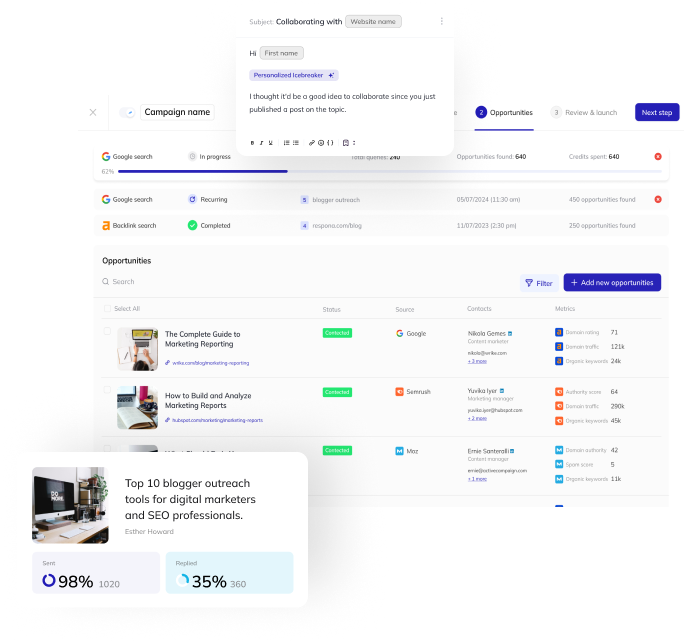Referral programs are fun.
They’re fun for the customers because everyone loves freebies.
They’re also fun for the business because these programs help grow your community, and build tighter relationships with it.
But, where do you start with a referral program?
In this article, we have collected top 18 referral program ideas along with their real-world applications for those of you seeking inspiration for a referral program of your own.
- What is a Referral Program?
- 1. Cash Rewards
- 2. Discounts and Coupons
- 3. Store Credit
- 4. Tiered Rewards
- 5. Points-Based System
- 6. Percentage Discounts
- 7. Charity Donations
- 8. Early Access or Beta Testing
- 9. Free Subscription Periods
- 10. Gamified Challenges
- 11. Exclusive Memberships
- 12. Joint Offers
- 13. Bundle Deals
- 14. Access to Exclusive Content
- 15. Seasonal Promotions
- 16. Customizable Rewards
- 17. Social Media Shoutouts
- 18. Exclusive Product Releases
- Wrapping Up
- Frequently Asked Questions (FAQ)
Link building cheat sheet
What is a Referral Program?
Before we dive in deep, let’s answer a simple but important question.
A referral campaign is a marketing strategy where businesses incentivize their existing customers to refer new customers in exchange for rewards.
These rewards can be discounts, cash, free products, or other benefits.
The goal is to leverage satisfied customers to organically grow the customer base through word-of-mouth recommendations.
Not to be confused with an affiliate program – where your affiliates help sell your products and earn a commission for doing so.
1. Cash Rewards
One of the most straightforward and appealing types of referral programs involves rewarding customers with cash for each successful referral.
The idea behind cash as a referral program reward is simple yet highly effective: customers are motivated to refer friends, family, or colleagues to a product or service because they know they’ll receive a financial incentive for their efforts.
This approach capitalizes on the universal appeal of money, making the reward tangible and valuable to a wide range of people.
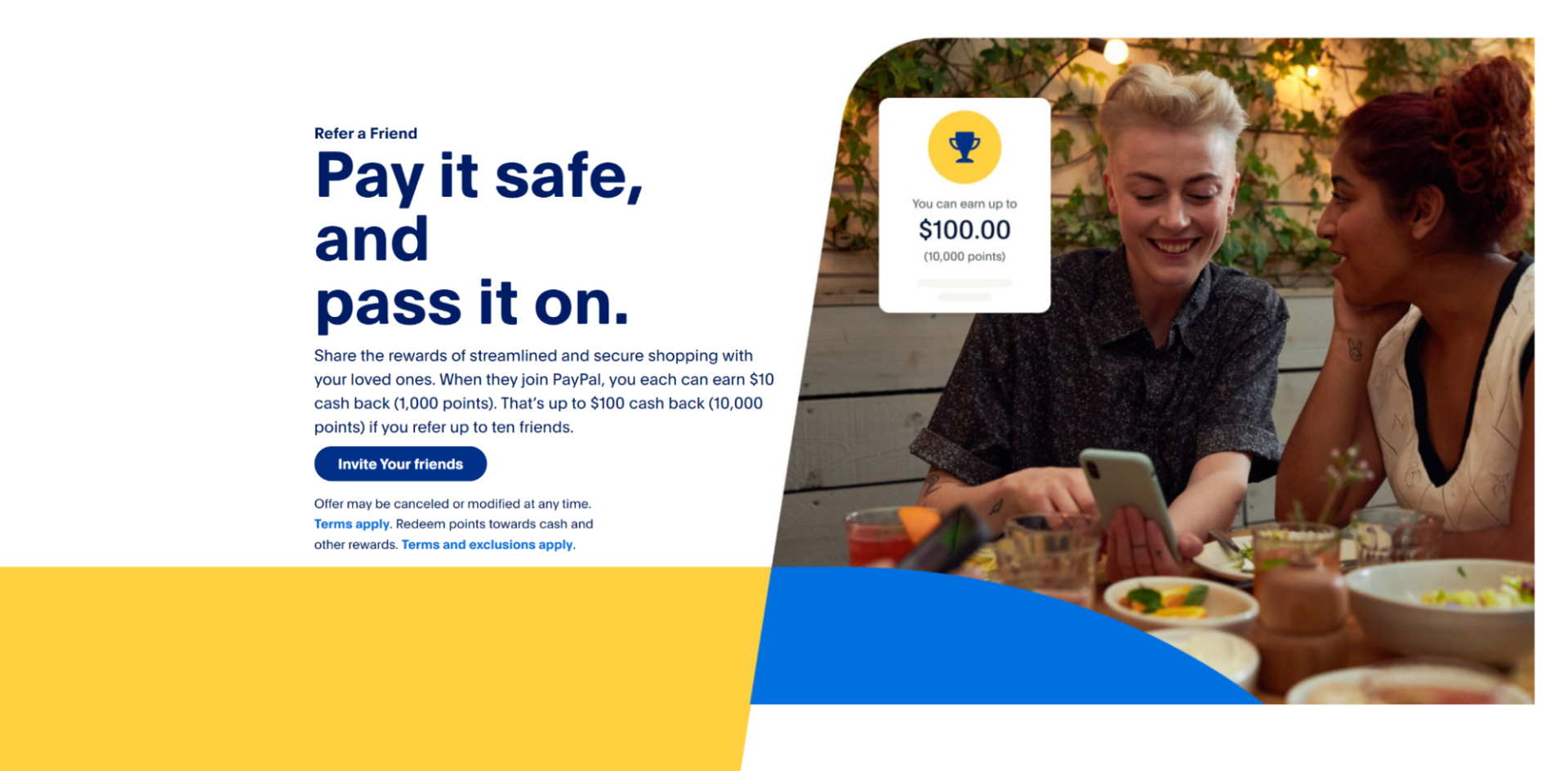
For instance, PayPal has successfully implemented this kind of program.
In PayPal’s referral program, both the person who makes the referral (the referrer) and the new user (the referee) receive cash bonuses after the referee completes certain activities, such as making transactions worth a specific amount.
This double-sided reward system not only encourages existing users to actively promote PayPal but also provides a compelling incentive for new users to sign up and engage with the platform.
2. Discounts and Coupons
Offering discounts and coupons as part of a referral program is a highly effective strategy to attract new customers while also rewarding existing ones.
This approach leverages the power of cost savings, a compelling motivator for most consumers.
By providing discounts or coupons, you can make your offerings more appealing to potential customers who might otherwise be hesitant to try out a new product or service.
At the same time, existing customers feel appreciated and are incentivized to spread the word.
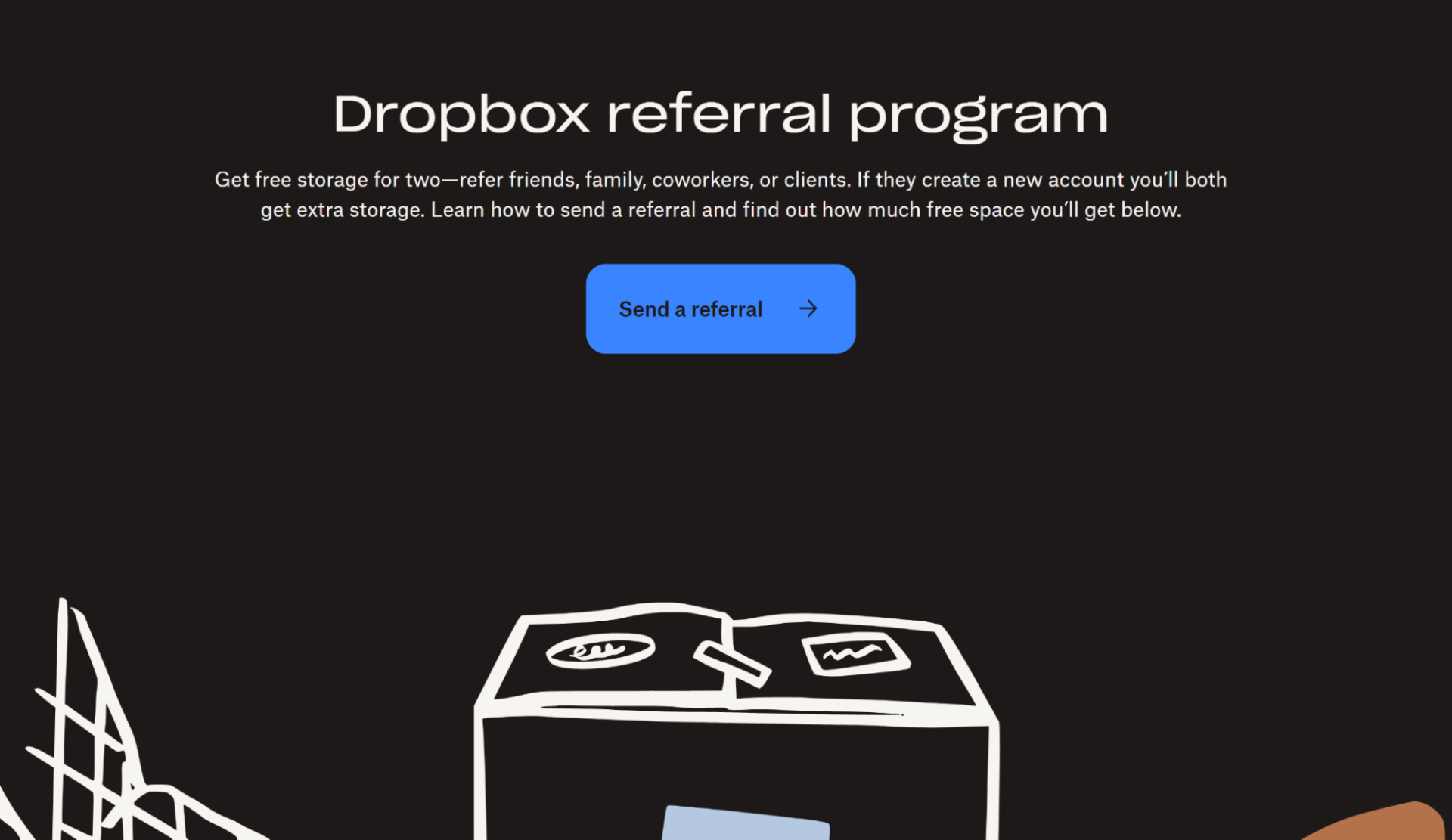
Take Dropbox’s referral program example. It is designed to benefit both parties: the referrer and the referee.
When an existing user refers a friend, they receive extra storage space—an invaluable resource for users who rely heavily on cloud storage.
Meanwhile, the new user often receives a discount on premium plans, making it more attractive for them to commit to a subscription.
By doing this, Dropbox not only expands its user base but also increases the likelihood of converting free users into paying customers.
3. Store Credit
Store credit as a referral incentive is a versatile and highly appealing method to encourage existing customers to bring in new ones.
By offering store credit, businesses not only reward their loyal customers but also ensure that the credit is spent within their ecosystem, driving additional sales and reinforcing customer engagement.
Store credits provide a flexible reward that can be used on a wide array of products, making it a universally appreciated incentive.
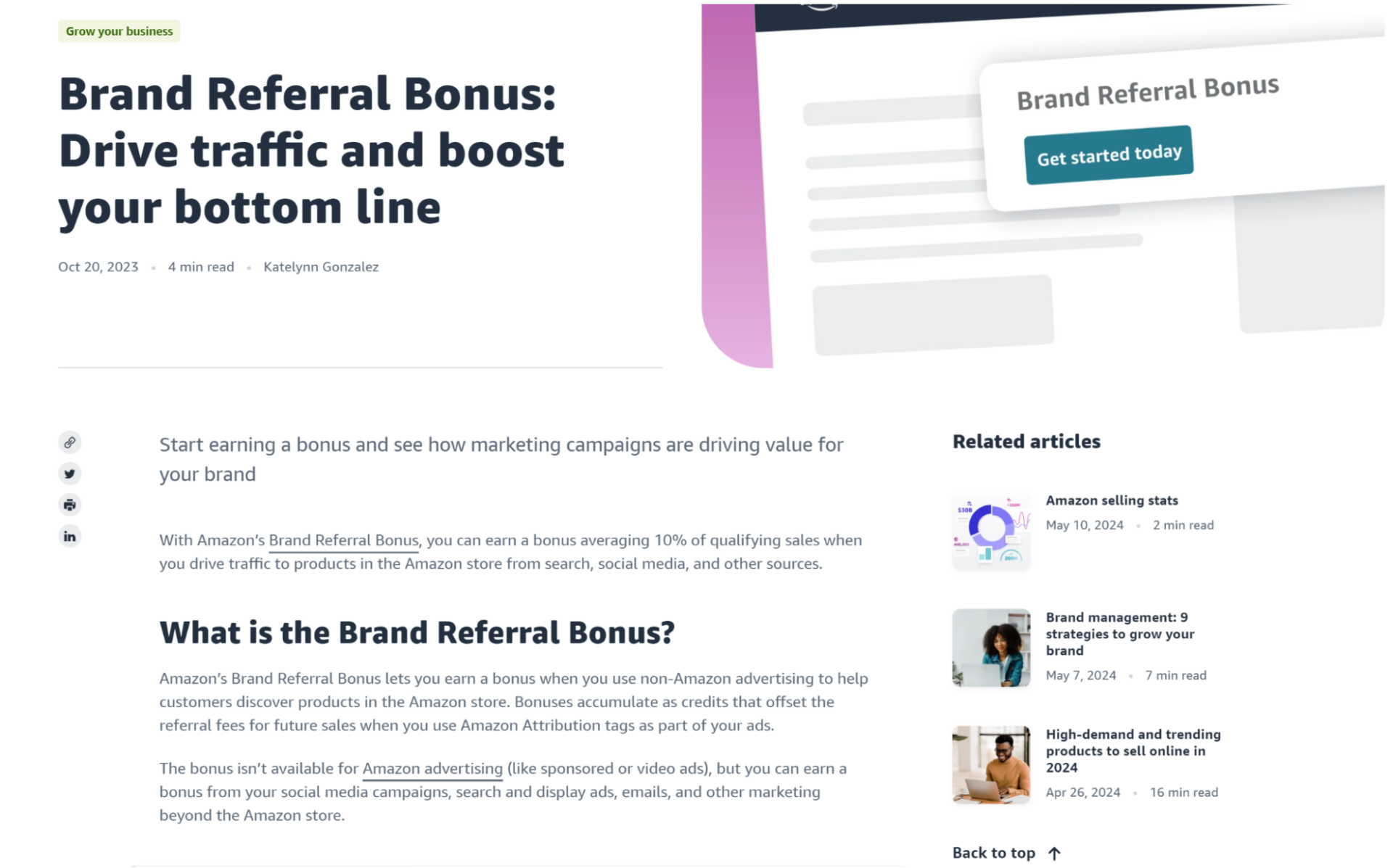
Amazon’s referral program uses this approach perfectly. When an existing customer refers a friend who makes their first purchase on Amazon, the referrer receives Amazon credits.
These credits can be used on future purchases, opening the door to the vast selection of products available on Amazon’s platform.
This not only incentivizes the referrer to continue shopping on Amazon but also introduces new customers to the extensive inventory and convenience the platform offers.
4. Tiered Rewards
Tiered rewards programs are an innovative way to escalate customer engagement by providing progressively larger incentives as the number of successful referrals increases.
The referral marketing idea behind tiered rewards is to create a sense of achievement and ongoing motivation, encouraging customers to reach higher levels of rewards by referring more people.
This approach not only boosts the volume of referrals but also fosters a deeper sense of loyalty among customers, who feel recognized and rewarded for their continued efforts.
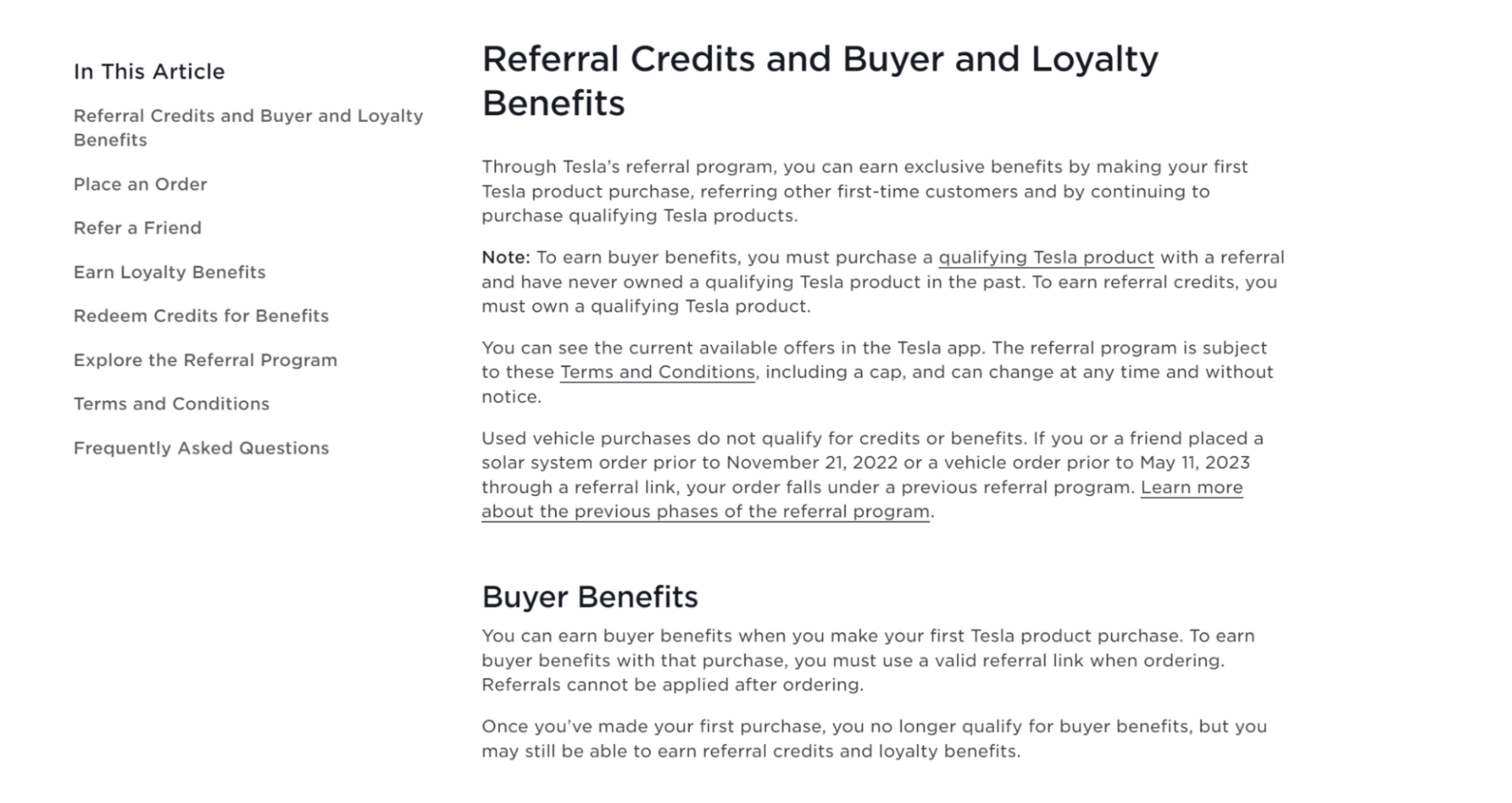
Tesla’s customer referral program is a prominent example of how tiered rewards can be effectively implemented.
By offering a range of escalating benefits, Tesla motivates existing customers to become brand advocates and ambassadors. Initially, referrers might receive smaller rewards, like cash bonuses or limited-edition accessories.
As they continue to refer more friends, the rewards become more substantial, including significant vehicle discounts and premium vehicle accessories.
5. Points-Based System
A points-based referral program is a versatile and engaging way to reward customers for bringing in new business.
In this system, customers earn points for each successful referral, and these points can accumulate over time.
The flexibility of points systems allows customers to redeem their accumulated points for a variety of benefits, including products, services, discounts, or even cash.
This multiplicity of referral reward options significantly enhances the appeal of the program, as it caters to a wide range of preferences and needs.
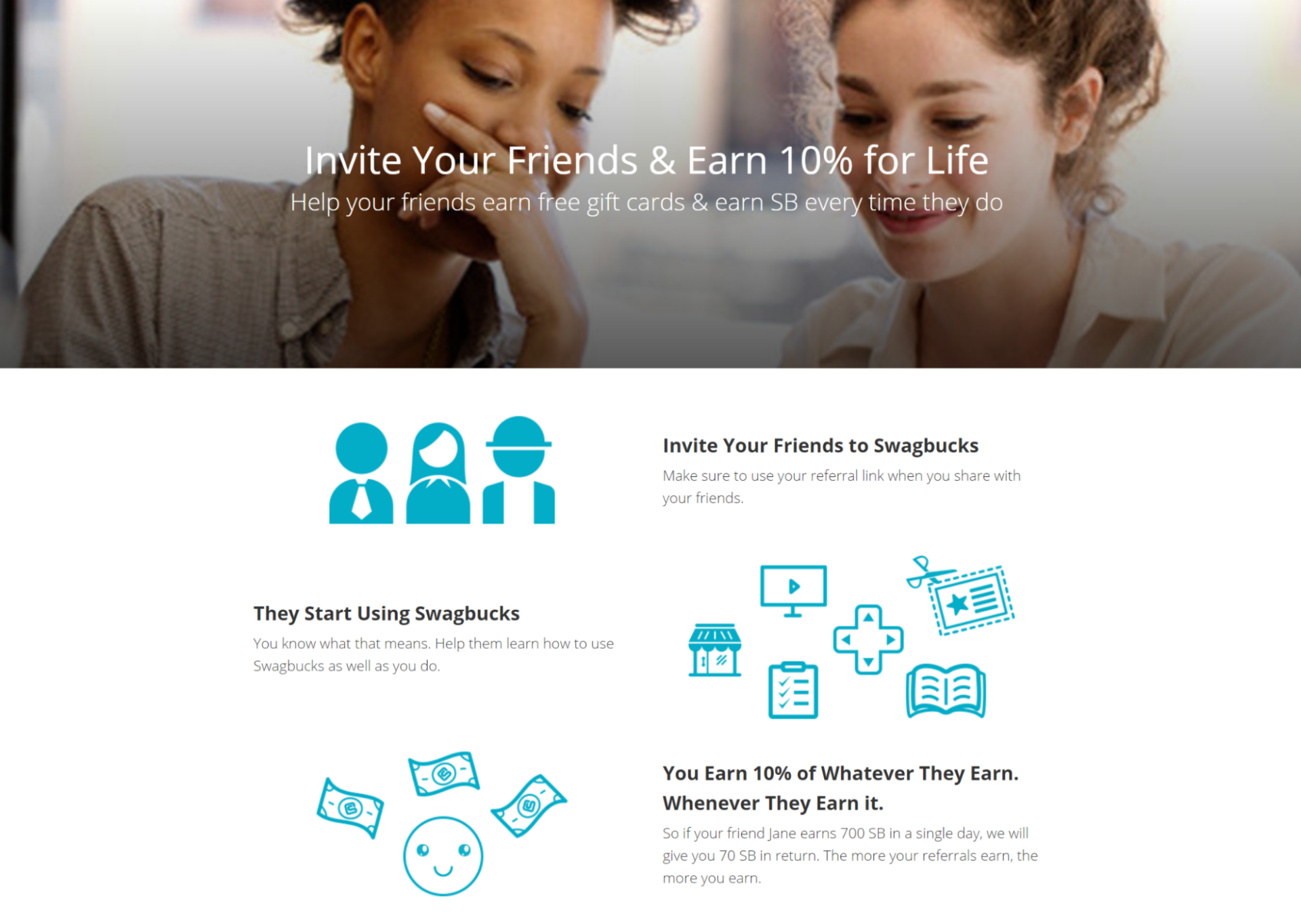
Swagbucks is a quintessential example of a successful points-based referral system.
Users of Swagbucks can earn points (commonly referred to as SBs) for referring friends to the platform.
These SBs can then be redeemed for numerous rewards, such as gift cards from popular retailers, premium products, or even cash prizes.
This system not only creates a dynamic and engaging customer experience for users but also encourages continuous participation. As users see their points accumulate, they become more motivated to keep referring, thus driving sustained growth and increasing customer loyalty for Swagbucks.
6. Percentage Discounts
Percentage discounts are a popular and effective way to incentivize both referrers and referees within a referral program.
By offering a certain percentage off on the next purchase, businesses can provide immediate and tangible value, encouraging customer participation.
This approach not only rewards the current customer for their referral but also makes the initial experience more attractive for the new customer, thus increasing the likelihood of conversion.
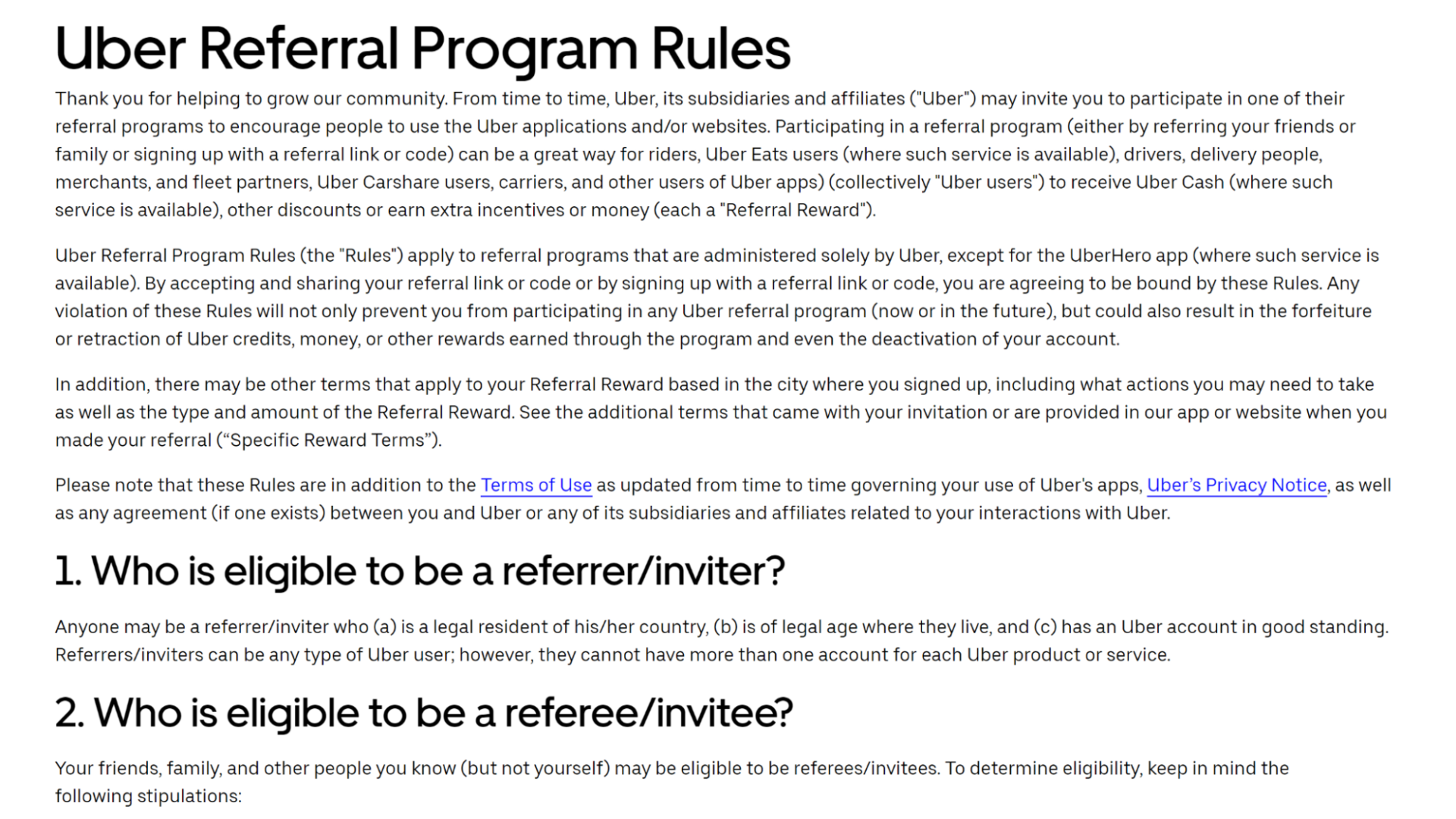
Uber’s referral program is the prime example of using percentage discounts to drive user engagement.
When an existing user refers a friend to Uber, the new user receives a discount code for their first ride.
Simultaneously, the referrer is rewarded with a discount on their next ride once the referred person completes their first trip. This dual incentive structure ensures that both parties benefit from the referral, creating a strong motivation for users to share their positive experiences with friends and family.
7. Charity Donations
Charity donations as a referral incentive offer a feel-good alternative to traditional rewards, appealing to customers’ altruistic values.
Instead of receiving a direct benefit, referrers have the satisfaction of knowing that their actions contribute to a good cause through in-kind contributions.
This type of referral program can attract socially conscious customers and enhance a brand’s reputation by aligning its business practices with philanthropic efforts.
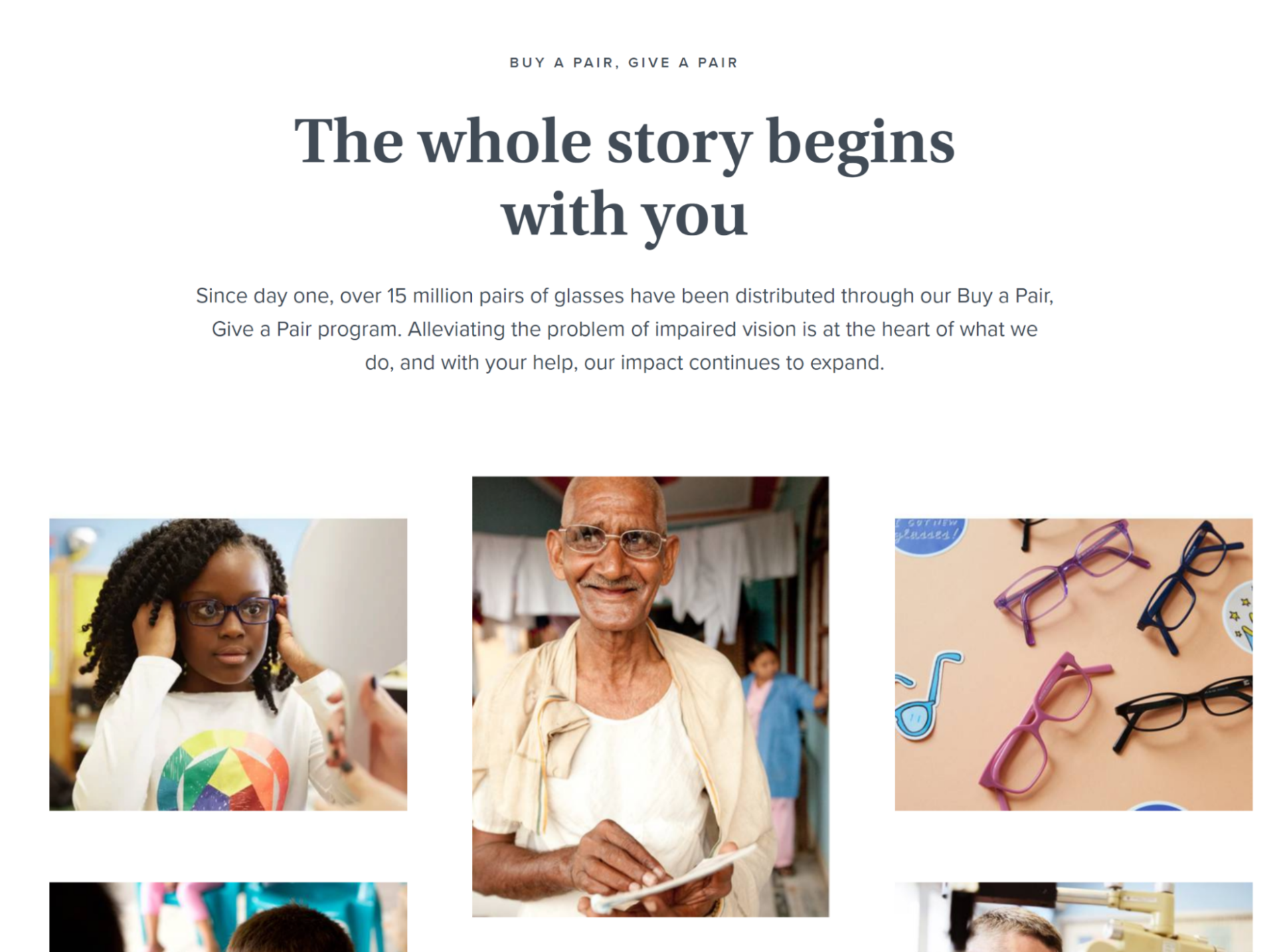
Warby Parker stands out as a prime example of this approach.
For every purchase made through their referral program, Warby Parker donates a pair of glasses to someone in need.
This initiative not only incentivizes customers to participate in the referral program but also makes them feel part of a larger mission to improve global eye care.
8. Early Access or Beta Testing
The concept of offering early access or beta testing as part of a referral program is a powerful strategy to attract enthusiastic and loyal users.
This customer referral program idea hinges on the allure of exclusivity, appealing to those who enjoy being ahead of the curve or who take pride in influencing the development of a product.
By providing exclusive access to new products, features, or services, companies not only reward referrers with something genuinely valuable but also create a sense of community and involvement among their user base.
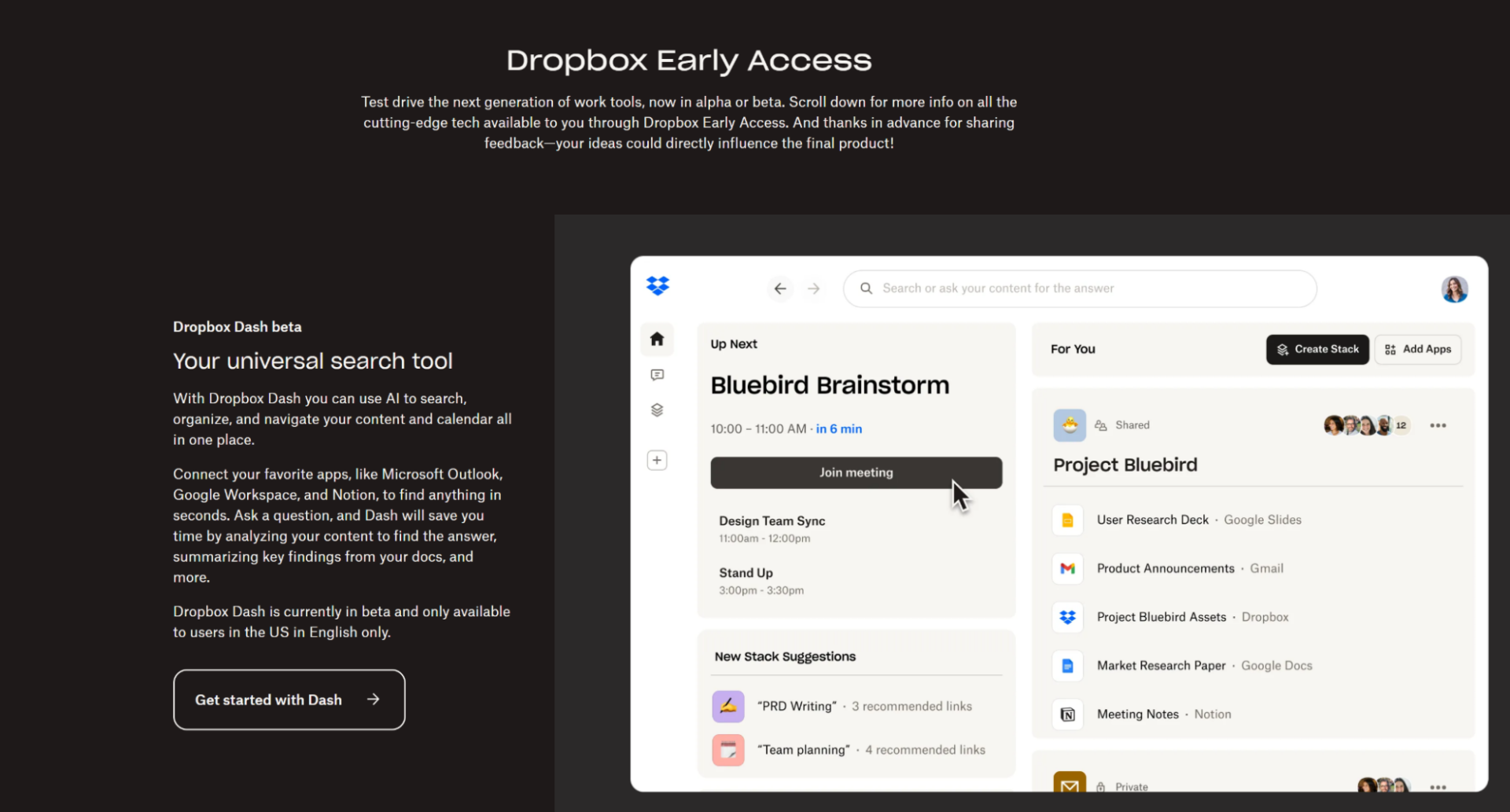
A notable example of this strategy in action is, once again, Dropbox.
During its early growth phase, Dropbox leveraged a referral marketing program that offered additional storage space to users who successfully referred friends.
As part of this incentive, Dropbox included early access to beta versions of the software, granting referrers a sneak peek at new features before they were publicly released.
9. Free Subscription Periods
This strategy provides tangible value by giving both the referrer and the referee a free period to enjoy premium services, making it a very appealing incentive.
It allows potential customers to experience the full array of benefits that come with a subscription, potentially increasing the likelihood that they will convert to paying subscribers once the free period concludes.
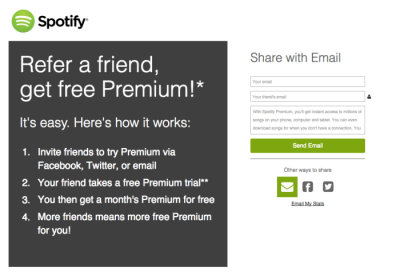
Spotify is the prime example of this approach with its referral program – although it has since been discontinued.
When a user successfully refers someone to Spotify, both parties receive a free month of the Premium subscription.
This not only encourages current users to spread the word but also allows new users to experience the service’s ad-free listening, offline downloads, and enhanced sound quality without any financial commitment initially.
10. Gamified Challenges
By turning referrals into a game-like experience or even a referral contest, you can tap into users’ competitive instincts and desire for achievement.
This approach rewards not just through tangible incentives, but also through recognition and a sense of accomplishment, making the referral process more interactive and enjoyable.
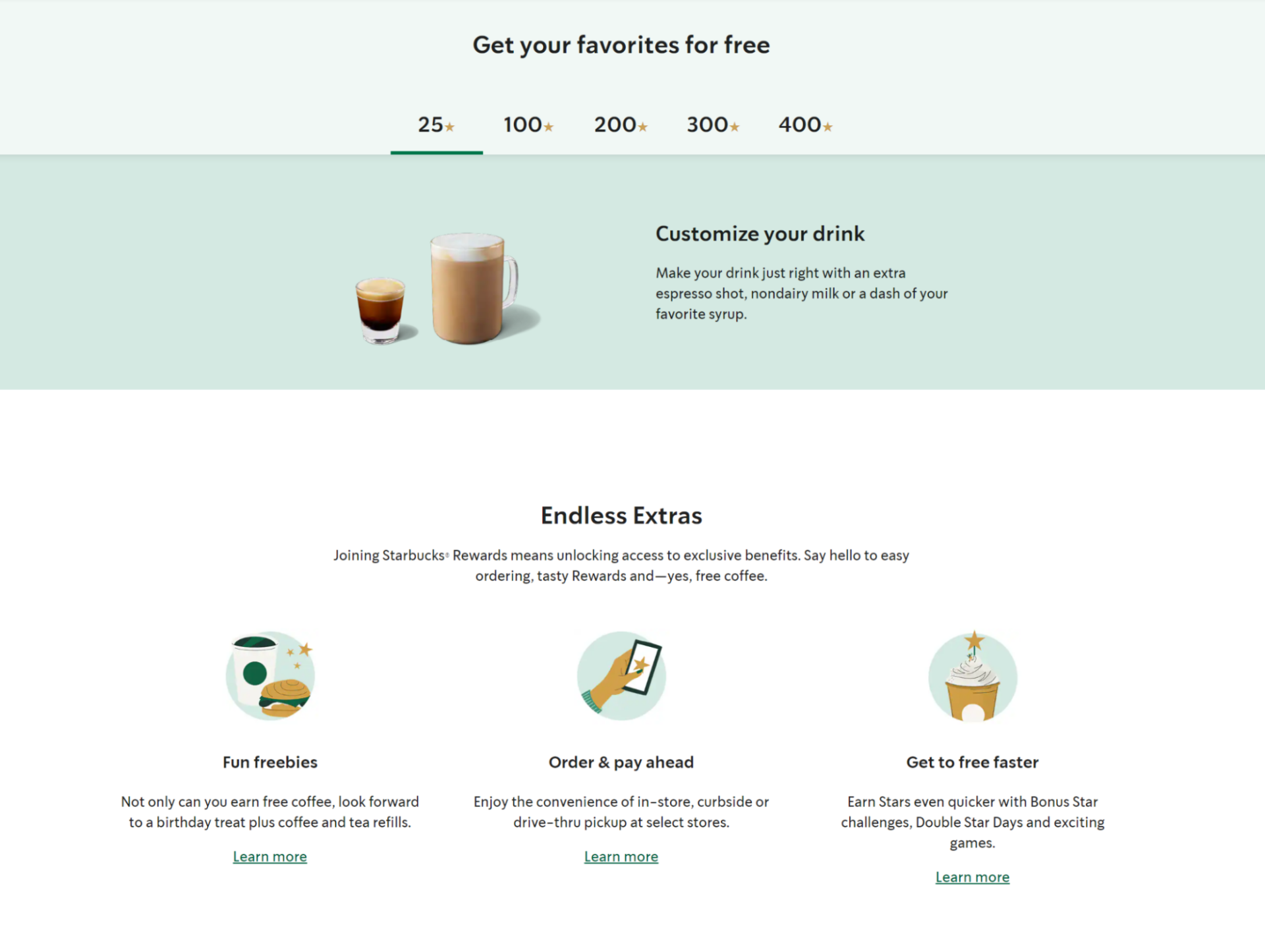
Let’s look at Starbucks as an example.
Starbucks uses a points-based system where customers earn “Stars” for each referral. These Stars can be accumulated and exchanged for free drinks, food items, or even exclusive merchandise.
11. Exclusive Memberships
This approach offers a path to elevated status and access to unique benefits, creating a strong motivation for users to bring in new customers.
The allure of exclusive perks, coupled with the prestige of reaching higher membership tiers, can significantly drive engagement and referrals.
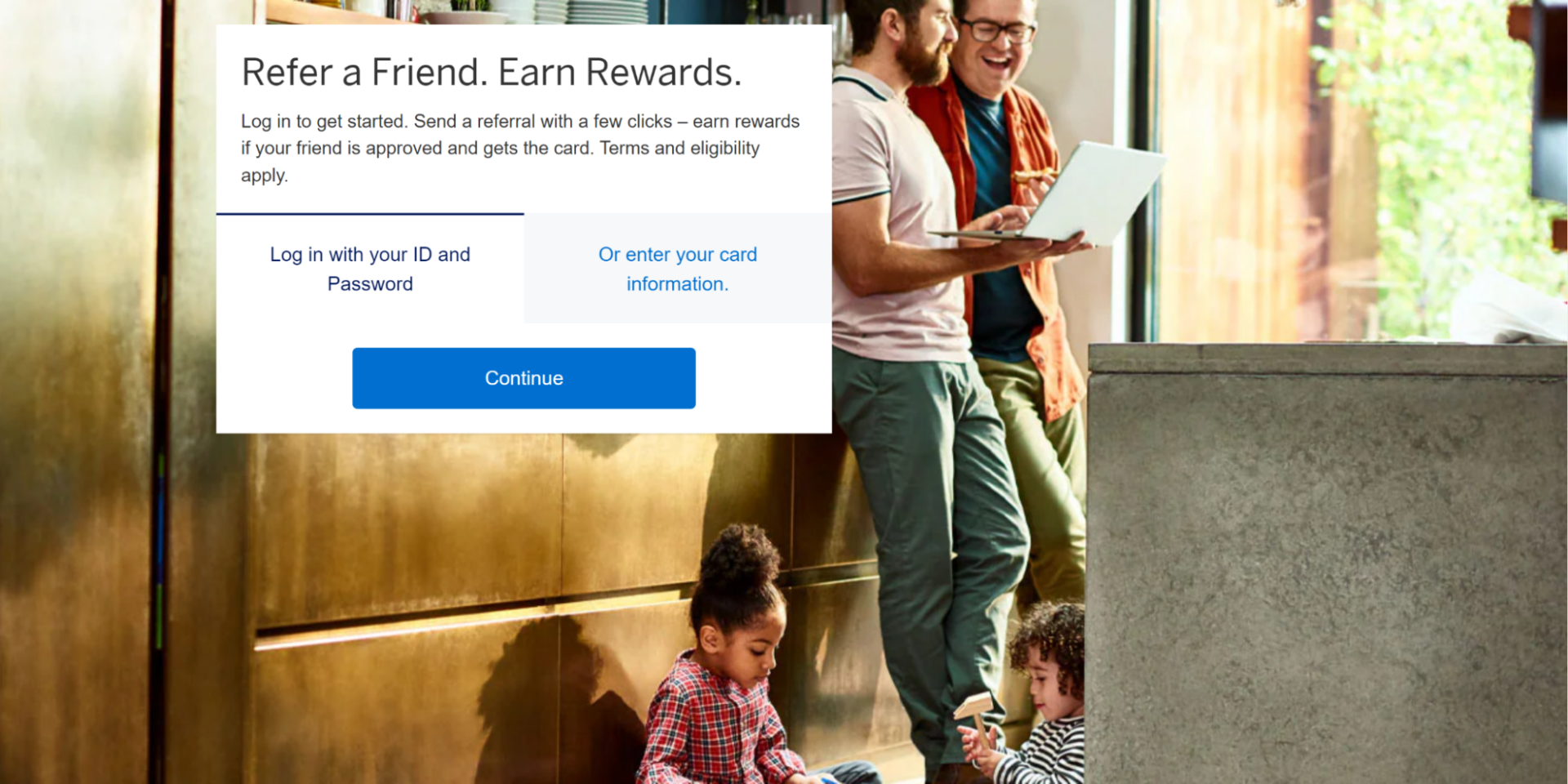
A prime example of this strategy is American Express’s referral program.
With this program, users can earn membership rewards points for each successful referral, which can accumulate and lead to higher membership tiers.
These elevated tiers come with an array of exclusive benefits, such as personalized customer service, access to exclusive events, and enhanced reward redemption options.
12. Joint Offers
The concept of joint offers in referral programs leverages the synergy between complementary brands to provide enhanced rewards that appeal to a broader customer base.
By partnering with another company, you can offer more attractive and diverse incentives, making your referral program more compelling.
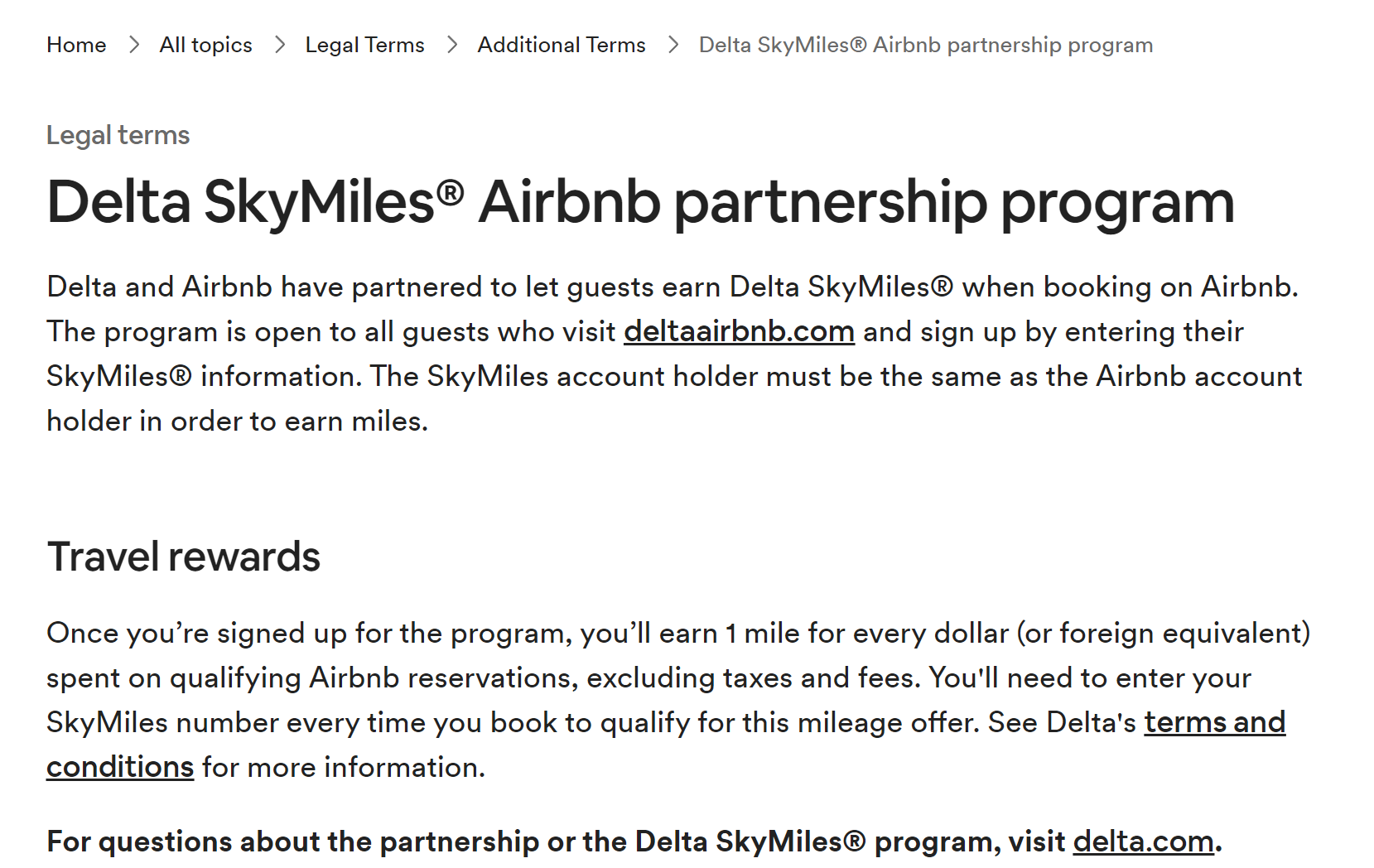
Like Airbnb and its collaboration with various airlines.
Through these referral partners, Airbnb offers frequent flyer miles to users who successfully refer friends to book a stay on the platform.
This joint offer taps into the travel interests of both Airbnb users and airline customers, creating a win-win scenario.
The referrer gains valuable travel miles for future flights, while the new user benefits from a seamless travel experience, combining accommodation and flight rewards.
13. Bundle Deals
This idea revolves around rewarding successful referrals with attractive packages or combined products, which often offer greater value than single-item rewards.
This not only entices customers to refer their friends but also provides them with a richer and more rewarding experience.
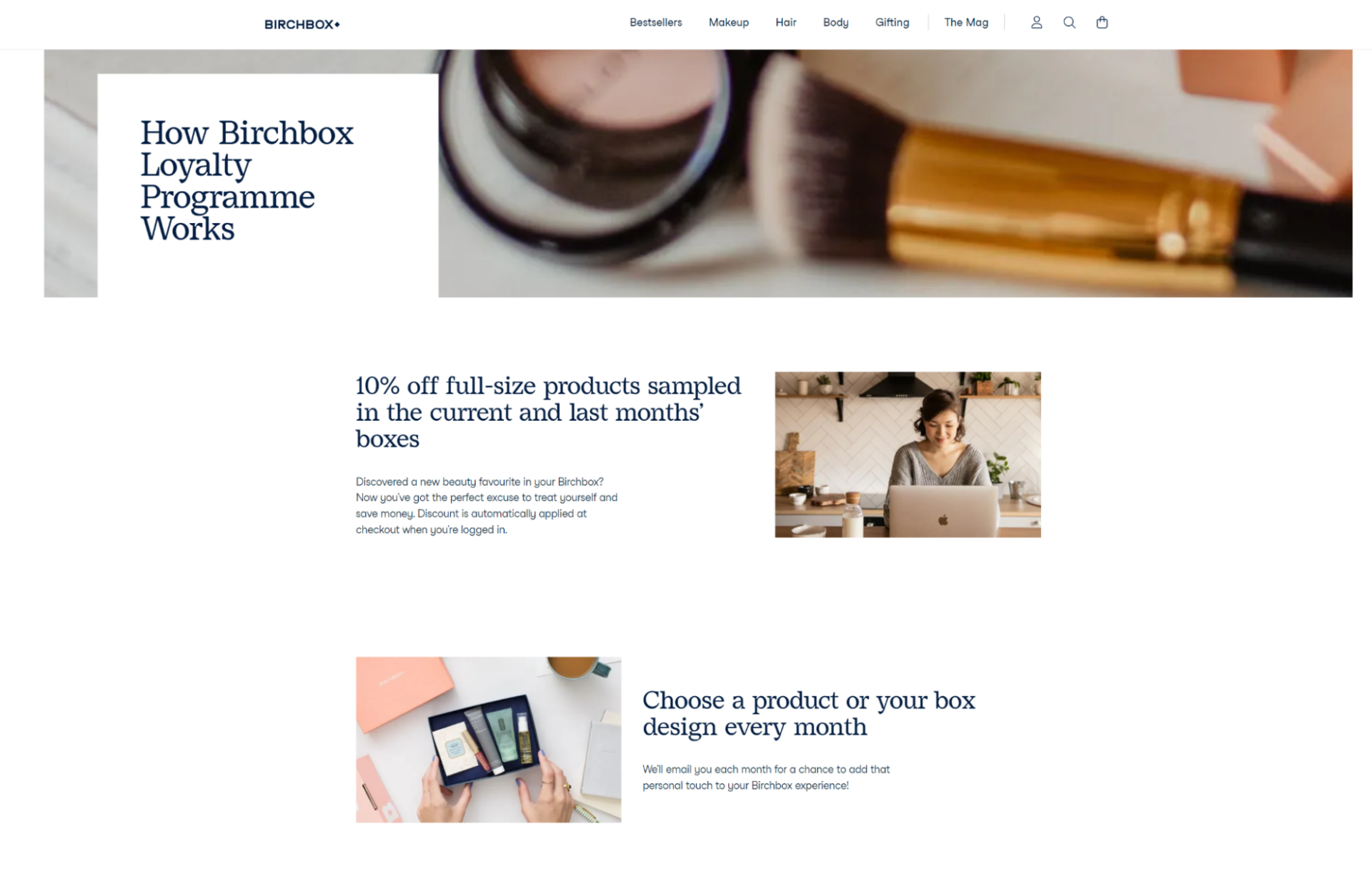
Subscription services, such as Birchbox, effectively utilize this approach.
Birchbox, known for its curated beauty subscription boxes, incentivizes customers by offering free boxes or bundled deals when they refer friends who then subscribe.
For instance, a customer might receive a bundle of deluxe-sized samples or an additional subscription box at no extra cost.
14. Access to Exclusive Content
Offering access to exclusive content as part of a successful referral program is an effective strategy to engage and reward users with something uniquely valuable.
This approach caters particularly well to audiences that place a premium on knowledge and specialized information.
By providing access to exclusive content like e-books, whitepapers, or webinars, you can create a strong incentive for users to refer others, ultimately aiding in acquisition and customer retention.
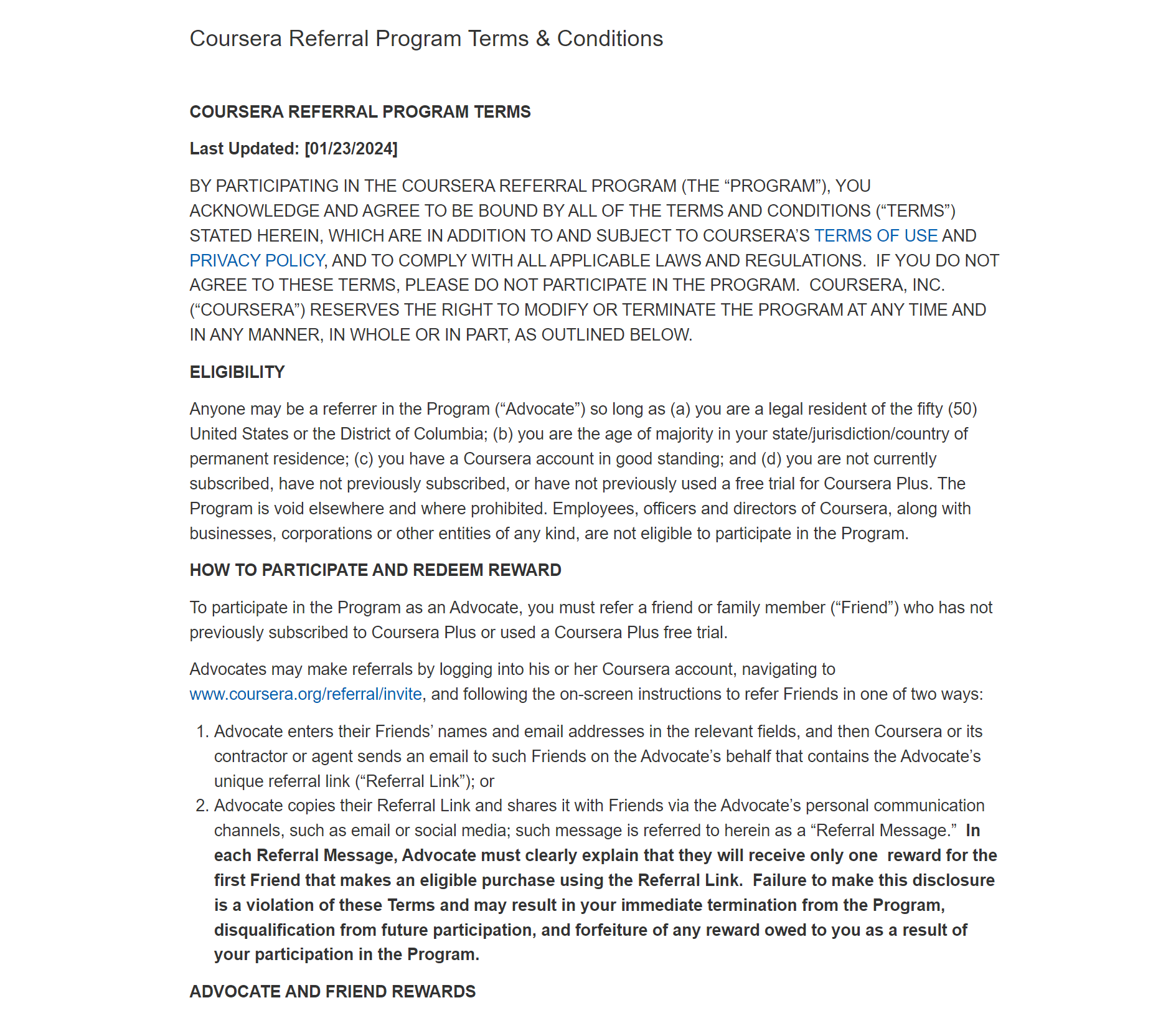
Online learning platforms, such as Coursera, are perfect examples of this in action.
Coursera might offer special courses, unique academic content, or even invitations to exclusive webinars for users who successfully refer new learners.
This not only provides immediate value to the referrer but also enhances their educational journey with rare and specialized resources.
15. Seasonal Promotions
Seasonal promotions in referral programs leverage the emotional and economic pull of holidays and special events to create timely and appealing incentives.
By aligning referral rewards with seasonal themes, you can generate excitement and urgency, encouraging customers to participate within a specific time frame.
This strategy not only boosts referral activity but also capitalizes on the heightened consumer spending typical during these periods.
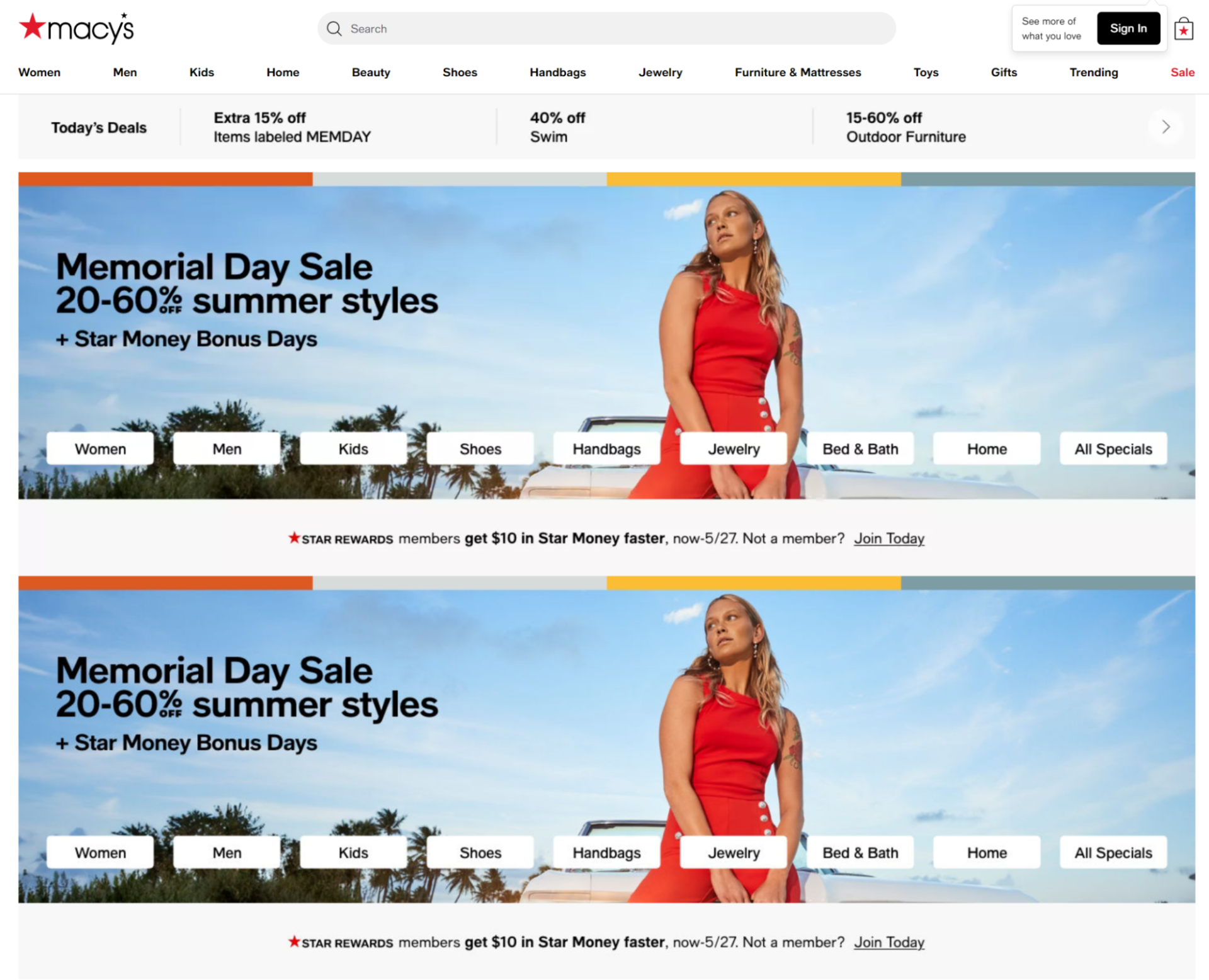
Retailers such as Macy’s illustrate this approach effectively.
During the holiday season, Macy’s might implement a referral program where both current customers and new sign-ups receive special holiday discounts or gift cards.
For instance, a customer who refers a friend might receive a $20 gift card for holiday shopping, while the new customer also enjoys a discount on their first purchase.
16. Customizable Rewards
Customizable rewards in a referral program empower customers by giving them the flexibility to choose the incentive that best aligns with their preferences and needs.
This tailored approach not only enhances user satisfaction but also increases the likelihood of participation, as individuals are more motivated when they can select a reward that is personally valuable to them.
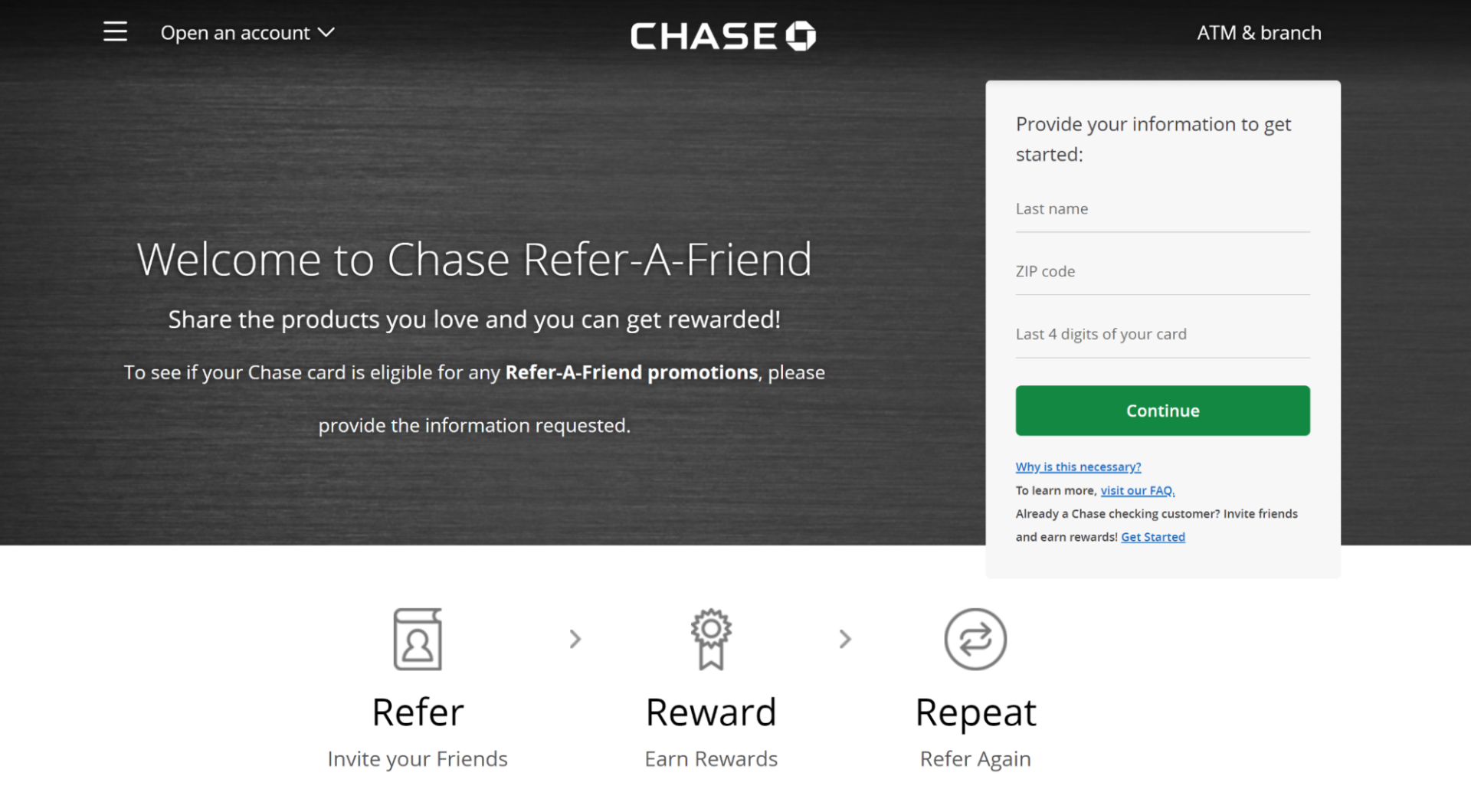
A prime example of this strategy is seen in banking services like Chase.
When referring friends or family to Chase, customers are given the option to choose their reward from a variety of appealing incentives.
They might opt for cash back, reward points, or airline miles, depending on what they find most beneficial. For instance, a customer who frequently travels may prefer airline miles to help cover future flights, while another might find cash back more practical for immediate use.
17. Social Media Shoutouts
Incorporating social gifting in the form of shoutouts into a referral program is a novel way to offer recognition and reward to loyal customers.
This strategy capitalizes on the public and social nature of platforms like Instagram, Twitter, and Facebook to provide visibility and appreciation to those who contribute to the brand’s growth.
This form of recognition not only rewards the referrer with a moment in the spotlight but also enhances their social media presence, making it a win-win.

Fitness brands such as Lululemon exemplify this approach by highlighting referrers on their social media channels.
When a customer successfully refers friends to Lululemon, the brand may reward them with a shoutout on their official Instagram or Facebook page.
This public acknowledgment can be immensely gratifying for customers, as it not only provides recognition from a beloved brand but also has the potential to increase their own social media following.
This strategy appeals especially to the fitness and wellness community, where social media presence and peer recognition play significant roles.
18. Exclusive Product Releases
The idea of offering exclusive or early access to new products as part of a referral program capitalizes on the excitement and anticipation that surrounds product launches.
This strategy not only creates a strong incentive for existing customers to refer others but also leverages their enthusiasm as a referral marketing tool.

By rewarding successful referrers with privileged access, you can foster a sense of exclusivity and community among their most loyal users.
Tech companies like Apple have effectively used this approach to build and maintain a passionate customer base.
For instance, Apple might extend an invitation to a select group of loyal customers—especially tech influencers—to participate in exclusive online reviews or gain early access to the latest gadgets.
Imagine being among the first to hold the new iPhone or to test out the latest MacBook.
Such an experience not only serves as a powerful reward but also generates buzz and word-of-mouth promotion ahead of public release.
Link building cheat sheet
Wrapping Up
So, there you have it. Hopefully after reading about 18 different real-life referral program implementations, you have found one or two that fit your business just fine.
But, to get even bigger results from your program, it’s also recommended that you start an affiliate marketing program – and recruit some influencers to promote your company in parallel.
Need help finding and recruiting new affiliates? Don’t hesitate to start your 14-day free trial with Respona to see how we can help.
Frequently Asked Questions (FAQ)
How do referral programs work
Referral programs incentivize existing customers to refer new customers to a business by offering rewards for successful referrals.
Typically, the referrer receives a benefit, such as a discount, cash, or points, and sometimes the referee (the new customer) also receives a reward, making it a win-win situation.
What are the key benefits of implementing a referral program?
Referral programs leverage word-of-mouth marketing, which can be extremely effective in attracting new customers.
They help increase brand loyalty, reduce customer acquisition costs, and drive higher lifetime value as referred customers are often more loyal and engaged.
What types of rewards are most effective in referral programs?
The most effective rewards are those that align with the interests and preferences of your target audience.
Commonly successful rewards include cash bonuses, discounts, free products or services, and exclusive access to special offers or content.
How can I track the success of my referral program?
Success can be tracked through various metrics such as the number of referrals made, the conversion rate of referrals to new customers, and the overall increase in customer lifetime value.
Utilize referral links, referral codes, and customer relationship management (CRM) software to monitor and analyze the performance of your referral program.
What are some best practices for promoting a referral program?
Promote your referral program through multiple channels such as email campaigns, social media, your website, and within your product or service interface.
Ensure the loyalty program is easy to understand and participate in, and clearly communicate the benefits and steps involved to both referrers and referees.




![Affiliate Management Guide for 2024 [+ Tools]](https://respona.com/wp-content/uploads/affiliate-management-1024x576.jpg)
